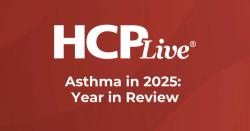
OR WAIT null SECS
Pediatric Obstructive Sleep Apnea Burden, CPAP Use Not Affected by COVID-19
Data from SLEEP 2022 suggests children with OSA may have faced worse psychosocial burden during the pandemic.
Burdens of obstructive sleep apnea (OSA) and management thereof, including use of continuous positive airway pressure (CPAP) therapy, were not significantly changed among pediatric patients during the COVID-19.
In fact, according to new data presented at the Associated Professional Sleep Societies (SLEEP) 2022 Annual Meeting this week, pediatric patients with OSA were more likely to report more psychosocial health changes than actual symptom or management changes.
Presented by study author Melissa Cole, MD, a sleep medicine fellow with the Cincinnati Children’s Hospital Medical Center, the findings highlight a need for quality-of-life intervention in children with OSA impacted by COVID-19.
Cole and colleagues sought to compare CPAP adherence and related outcomes in pediatric patients with OSA seen before and during the pandemic, and between those seen for in-person care versus via telemedicine. They emphasized the state of unknowing surrounding methods of remote care adopted during COVID-19, and how they would apply to children with the chronic sleep condition.
“CPAP adherence in children with OSA is often sub-optimal and there is concern for worsening during the COVID-19 pandemic,” they wrote. “Although telehealth has been used in sleep clinics during the pandemic, there is little known about telemedicine’s effectiveness in specialized care.”
The team conducted a retrospective cohort analysis of children diagnosed with OSA and prescribed CPAP for treatment. All eligible patients were seen in a CPAP clinical between January 2018 and September 2021, and had ≥1 pre-pandemic and post-pandemic visit each.
Investigators collected CPAP adherence data, as well as patient outcomes via the Epworth Sleepiness Scale (ESS), Michigan Sleep-disordered Breathing Questionnaire (PSQ) and Pediatric Quality of Life Questionnaire (Ped-QOL). Variables were reported as mean scores, and statistical comparisons were conducted through a mixed-effects model.
Cole and colleagues accumulated 147 patients who met criteria, totaling 353 visits among them (147 visits prior to the pandemic; 206 visits afterward). A majority of patients were male (57%), White (82%), and ≥12 years old (63%). More than three-fourths (78%) of post-pandemic visits were conducted via telemedicine.
Investigators observed no statistically significant differences in pre- and post-pandemic patient data for the following outcomes:
- CPAP usage of >4 hours (71% pre-pandemic vs 73% post-pandemic; P = .95)
- ESS score (6.4 vs 5.9; P = .27)
- PSQ score (0.38 vs 0.36; P = .90)
That said, investigators did observe a significant worsening in the psychosocial health domain of Ped-QOL scores from pre-pandemic (68.6) to post-pandemic (74.5; P = .012).
When comparing in-person to telemedicine visit outcomes, investigators observed no differences in CPAP usage, ESS, PSQ or Ped-QOL scores during the pandemic.
The team concluded that children with OSA had no significant change in their adherence to CPAP therapy, burden of sleepiness, or disease symptoms during the pandemic. Additionally, telemedicine visits provided similar CPAP therapy efficacy, based on adherence and outcome metrics being consistent with in-person metrics.
“Interestingly, patients reported higher psychosocial health during the pandemic despite no difference in CPAP adherence,” they wrote. “Factors not related to OSA management may contribute to the improvement of quality of life in this population.”
The study, “The Effects of the COVID-19 Pandemic on Continuous Positive Airway Pressure (CPAP) Adherence In Pediatric Patients With Obstructive Sleep Apnea (OSA),” was presented at SLEEP 2022.


